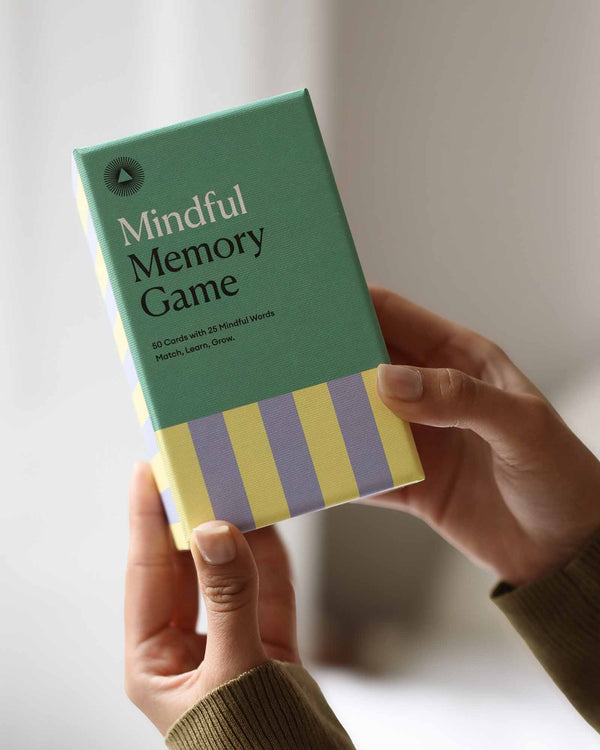How to Plan Your Day, Your Week, Your Year
by Intelligent Change
Do you know how to plan your day effectively? How about long-term planning that goes beyond weekly and monthly organization?
Have you developed a method or a system that allows you to fulfill all of your tasks successfully and achieve your goals without your social and emotional relationships suffering?
Keeping your life organized in adulthood is like juggling balls in a circus, with someone just throwing more and more balls at you. If you reach a point where you’re juggling too many balls, some of them will have to fall down.
This is why good estimation and organization are everything. If you stick to certain rules, you’ll be able to juggle more balls than you ever thought you could.
Finances, family, friends, work, side projects, learning a new language, grocery shopping, home chores… the list can go on and on.
If you often feel overwhelmed by the number of things you got going on, perhaps you need some improvements in your organization method.
Overcoming procrastination? Possible. Scratching that one item you’ve been rewriting in your to-do list for weeks or even months? Yes, it’s possible.
In this article, we’ll share some tips on how to plan your day, week, quarter, as well as your year.
Let’s start.
How to Plan Your Day

Let’s start with the smallest organizational unit on our plate: a single day.
How to plan your days effectively? Here are a couple of tips that will also come in handy for planning your week, quarter, and year.
1. Build Routines
Morning routine, evening routine, training routine, eating routine… sounds boring? Well, it shouldn’t. Our brains love routines, and there’s a whole bunch of reasons why they’re good for us.
How Do We Form Habits and Routines?
Forming routines and habits seems like something we do effortlessly, and unconsciously: how many times have you realized that you don’t remember whether you’ve locked the door or not? Or how many times did you walk or drive a well-known path without remembering how you actually went through it? That’s called an autopilot mode, and it’s often used in a negative context. However, there are certain situations when it’s very useful, such as forming habits.
A recent study conducted at MIT revealed that we have a brain region for forming habits, based on our previous decision making. If you’ve consciously locked your car door two or three times, the fourth time you’ll have a neural pathway that gets activated by an outside signal (exiting the car) and you’ll just automatically do it, without thinking.
If you often go running following a complicated route through your neighborhood, it will take two or three strolls before it “carves into your brain”, and before you know it, you’ll find yourself running the same path without consciously making decisions on where to turn.
Why Is This Good?
Habits, routines, and autopilot mode help us rest our brain and prepare us for what’s coming up next.
If we have to go through a day making thousands of minor decisions such as:
- Which road to take to get to work;
- What to do after waking up;
- What to eat;
- Which exercises to do, and so on,
we’d get tired really fast.
However, if you’ve formed a routine for each of these, you’ll complete each of these tasks effortlessly.
Moreover, after a few repetitions, your morning routine will signal to your brain and body that work starts soon!
So, to sum up, the main benefits of having a routine are:
- Minimizing uncertainty (you automatically know what you’re doing);
- Clearer thinking (because your brain is not overwhelmed with information and decisions);
- Saving energy;
- Improving your focus and attention;
- Preparing for what’s coming.
How to Form a Routine?
For example, instead of snoozing your alarm clock until the last moment, you can build a productive morning routine. Exercise, do yoga, meditate, prepare a healthy breakfast, fill out The Five Minute Journal, or practice positive affirmations.
Check out how Alex and Mimi Ikonn spend their mornings to get some inspiration!
The morning routine is supposed to give you energy and prepare you for a productive day. On the other hand, you can also instill an evening routine, based on activities that calm you down, help you summarize and reflect on the day behind you, and prepare you for bed. Here’s how Mimi Ikonn’s night routine looks like.
Some of the things you can do in the evening are:
- Meditation;
- Filling out The Five Minute Journal;
- Preparing a light and healthy dinner; Preparing for the next day (more on this in a later section);
- Reading a book;
- Stretching;
- Going to bed at the same time every evening;
- Dropping the pre-bed phone scrolling.
What’s very important about forming routines is differentiating between good habits and bad habits. Good habits are designed to bring you long-term success and gear you towards achieving your goals, while bad habits do exactly the opposite: they’re either time-wasters or simply don’t bring you any good. In order to figure out which habits you want to instill, you need to:
2. Know Your Goals and the Steps to Achieve Them
If you want to learn how to plan your day more effectively, you need to know what you want to achieve. Do you want to expand your business? Improve your marketing strategy? Get a promotion? Become a vegan? Spend more quality time with your loved ones?
If you have at least an overall idea of what you want to achieve, that’s great. If not, take a blank paper or open a blank document on your computer, and start brainstorming.
That being said, just saying that you want to build a better marketing strategy for your business is not really a goal.
What does that mean? How are you going to achieve it? How will you know when you’re there?
Good goals are achievable goals. If you’re not sure how to set achievable goals, feel free to check out our Step by Step Guide.
Once you’ve got your goals aligned, it’s time to create an action plan and actually get into action.
That’s where The Productivity Planner jumps in.
Why Is the Productivity Planner Important for Achieving Your Goals
If you want to figure out how to organize your day and stick to the plan, we can’t imagine a better way than using The Productivity Planner.
The name says it all: The Productivity Planner is designed to boost your productivity levels and help you become a better-organized person.
It’s based on three strategies that successful people implement into their daily routines:
Planning Ahead (Daily and Weekly)
The Productivity Planner is designed to help you eliminate any uncertainty. Once you have your goals lined up, you need to decide how you’re going to achieve them. And once you’ve done that, it’s time to fill out your Productivity Planner.
Every week, you need to assign yourself tasks for the next seven days. That’s the longer-term level of planning. Then, you need to know your tasks every day.
Pro tip: instead of assigning yourself tasks every morning, do this the night before, as part of your evening routine. That way, you’ll wake up with a calmer head, because everything will be already lined out, and you can start your day in a more relaxed manner.
The Most Important Task of the Day
One of the biggest productivity killers is not knowing what to do and when to do it. Got 10 items of seemingly equal importance on your to-do list? You don’t know where to start?
Learning how is called prioritization. Nobody is born with this skill, you need to learn how to do it.
This is why The Productivity Planner is so effective—it’s designed to force you to choose your most important task for the day (MIT).
The MIT is the task that brings you closer to your goals, or the task that has the closest deadline and is of very high importance. If you’re not sure how to prioritize, try asking yourself these five questions.
After setting up your MIT, everything else is easy: all the remaining tasks are tasks of secondary importance and additional tasks. Once you get all that defined, it’s time to apply some time management techniques.
The Time Focus Technique
Tired of multitasking? Long working sessions? Don’t worry, The Productivity Planner has you covered. The Time Focus Technique is a simple principle designed to help you eliminate distractions, save energy, preserve your focus, and quit multitasking. How?
Once you get your tasks defined and structured, it’s time for action. But with The Productivity Planner, this no longer means 5 hours in a computer chair with half of your brain screaming “I want to go outside!”
The Time Focus technique teaches you to work in short sessions to preserve your energy and focus. It looks like this:
- 30 minutes of work, 5 minutes of break x 4;
- Once you get these 4 sessions completed, you take a longer, half-an-hour break.
Neat right?
Every time you complete one 30+5-minute session, you color a circle in your Productivity Planner. When all four circles are colored, you can treat yourself to a longer break.
Reflection
At the end of each week and day, The Productivity Planner asks you to reflect on your experience. What did you achieve? Are you satisfied? What could be done better?
Reflecting on things is important because it gives a broader perspective on your progress and helps you consolidate your thoughts and emotions. Read more about it in our blog article on the reflective journal.
3. Overestimate the Time You Need: Schedule Planning Fallacies
One of the greatest productivity mistakes you can make is making a packed schedule that only works in vacuum.
What do we mean by this?
Traffic jams, our kids suddenly puking, no clean shirts left in the closet, forgetting to schedule for an important meeting and other planning fallacies.
Planning fallacy refers to our tendency to underestimate the time necessary for completing a certain task, because we don’t account for some unpredictable events that just always seem to happen. And they do happen, and somehow, we never plan for them, despite previous repeated similar experiences.
If you’re wondering how to plan your day out, you should know that accounting for things you know will happen is just one part of the process. You also need to plan for “the unknown”: all the unpredictable little things that might occur.
How do you do this?By adding extra 10 minutes, half an hour, a few hours, or even days, depending on the tasks you're dealing with.
How do you know how much is necessary? Experience and reflection.
4. Be in Tune with Your Nature
“Choose a job you love, and you will never have to work a day in your life”
Confucius
This wise thought by Confucious can have a broader meaning, as it’s applicable to so much more than just your profession.
Go back to tip number 1: building productive habits and routines. It’s important that these habits are in line with your nature.
If waking up at 5 am doesn’t work for you, don’t do it just because some well-known successful people do it. If you’re going to be all sleepy and grumpy for the next couple of hours, then it’s not worth it.
So instead of pushing your morning routine to begin with an exercise at 5:30, you can, for example, reschedule to work out after working hours and treat yourself to more sleep. If you don’t like ironing your clothes, stop buying cotton shirts. If you don’t enjoy reading, but still want to consume books or news, listen to audiobooks and podcasts.
Moreover, if you have an idea on how to make The Productivity Planner more adequate for you, or you think that different time intervals would work better for your Focus Time Technique, give it a shot as an experiment, and see what works best with your nature. Check out how you can use The Productivity Planner to manage your days more effectively.
5. Consistency Beats Perfection
Being a perfectionist can sometimes sound like a positive thing, right? You have an eye for details and you’re willing to add extra effort for the best possible delivery. But also, you stress out over minor stuff, you’re unable to meet the deadlines because you’re never satisfied with the final product, you even start procrastinating to avoid the unbearable pressure of being perfect.
Striving for absolute perfection is the best way to remain unproductive. If scheduling for perfectionist tendencies was a part of your schedule-for-planning-fallacies plan, you’d need an extra life to address all those details.
That’s why you should work towards being more consistent with your schedule, even if it means accepting the “unperfect” work.
How to Deal with Perfectionism
The first step is creating realistic plans. Is it realistic for you to exercise every day? We assume it’s not. But is it realistic to exercise 3 times a week? It probably is!
It applies to other examples as well: if you want to watch less TV, is it realistic to say “I won’t watch television ever again”, or “I’ll watch television X hours a week”? We assume the latter.
Furthermore, make regular reality checks. If you struggle with perfectionism, you know that its rooted in endless self-criticism and doubt. Fight them off by asking yourself:
- Is what I think factual?
- Am I jumping to negative conclusions?
- Is the situation really all that bad, or am I exaggerating?
- What’s the worst-case scenario? Is it really all that scary?
- Will I remember this in five years as a terrible event that flushed my life and my career down the drain?
These questions should help you establish a rather objective view of the situation you’re dealing with.
Another thing you can do is lower your stakes. This one is probably the most difficult: if you could just do it, you already would, right? So how do you lower your stakes? By precisely (re)defining the outcomes of your actions (in a non-perfect way).
Short Summary
We gave you these five tips as an answer to the question: how to plan your day and stick to it? Let's admit it: it’s not easy, it’s not simple, and it does require a change in mindset.
But, while we’re here, let’s not forget that long-term planning is just as important as daily planning. How you organize weekly, quarterly, or yearly directly affects your daily organization.
Let’s dive into planning your week, planning your year, and making quarterly plans.
How to Plan Your Week

While we’re moving towards larger time-units, everything we said about daily management and productivity applies to your weekly schedule as well: routines, goals, task management, The Productivity Planner, scheduling for planning fallacies, staying in tune with your nature, and dropping the perfectionism.
Thinking in bigger chunks than daily plans does bring some novelties. Let’s go through them.
1. Create a Master To-Do List
This one will be handy for scaling up your organization to quarterly and yearly plans. Just take a huge spreadsheet or a blank piece of paper and write down everything you want to accomplish.
Here’s a short example:
- Pass 3 more exams;
- Obtain a driver’s license;
- Get new office furniture;
- Expand your team for two more people;
- Apply for two more projects;
- Run a half-marathon in October;
- Fill-out The Five Minute Journal every day;
This list can go on and on, depending on your ambitions for the coming period. Once you have it ready, you need to define time frames for all list items. Then, you need to define how you’re going to achieve each of those things—define all the steps you need to take.
We already explained how you can use The Productivity Planner to maximize your daily organization. However, The Productivity Planner also requires you to plan out your weeks. If you have your goals and tasks outlined already, weekly planning should be a piece of cake.
Remeber to reflect on your progress at the end of each week.
2. Plan Ahead
Don’t wait for Monday to come to start planning out your week. Have it ready on Friday, or during the weekend. Mondays are so much better when you already know what awaits.
3. List Your MITs
Remember how we said that with daily level planning you need to pick one MIT for the day? Well, instead of deciding on that every day, use your Fridays (or Sundays) to list all the MITs for next week and assign them according to their urgency/importance.
4. Divide Your Week Based on Your Personal Priorities
Besides prioritizing the most urgent tasks, there are other levels of planning applicable to planning your week.
For example, Twitter CEO Jack Dorsey uses theme planning for his weekly schedules:
- Monday: meetings and run-the-company type of work;
- Tuesday: developing the product;
- Wednesday: growth planning, communications, and marketing, and so on.
You can do this as well. Here’s an example:
- Monday: studying for exams;
- Tuesday: office work;
- Wednesday: applying for projects, etc.
5. Manage Your Energy
Every Friday you’ll assign many tasks to your next-week self. However, you need to be careful and think ahead:
- Is this task energy-draining (D)?
- Is it neutral regarding your energy levels (N)?
- Is it energizing you (E)?
For example, accounting your monthly finances is energy-draining, as well as three-in-a-row meetings with your business partners. On the other hand, a simple staff meeting in the office can be marked as neutral, while exercising, or getting new furniture for your office can be considered as energizing.
When you’re planning out your week, try not to place all the draining tasks in one day. Make sure to create a healthy balance.
6. Stay Flexible
Being rigid about your schedule can become counterproductive. Planning stuff is great, because it allows you to avoid the unpleasant uncertainty of not knowing what to do next. But being inflexible about moving today’s tasks for tomorrow because something assigned for tomorrow needs to be done today, is just not how you should roll.
Flexibility is the root of our creativity, therefore it can be very good for improving our communication, problem-solving, and innovation skills!
Short Summary
Now that you know how to plan your week for maximum productivity, it’s time to switch to more complicated chunks or organization: quarterly and yearly planning.
How to Plan Your Year

Planning your year is perhaps the most difficult part of the process. You need to define your goals and tasks, split them into steps, define time frames, think so much in advance, plan for your private and professional life, and so on. The tips we gave you for weekly planning, such as creating a master to-do list or staying flexible apply here as well (The Productivity Planner not so much at this level, as it doesn’t account for yearly plans, but you can use The Best Year Journal for planning your best year ahead).
Here are a few tips on how to do this just as effectively as planning your week and day.
1. Define Your Goals Using the SMART Matrix
You know how we said you should make a master to-do list, make those to-dos goals, and then split them into tasks and steps?
Well, there’s no easier and smarter way to do this than by using the SMART matrix!
To-do lists are great first steps, but they only remain wishes on paper if you don’t turn them into achievable goals. So, if you want your weekly and daily planning to make any sense, you need to define your yearly goals first, using the SMART matrix.
SMART stands for:
S—Specific;
M—Measurable;
A—Achievable;
R—Relevant;
T—Time-Bounded.
This means that creating a “running a half-marathon” to-do is not enough. How are you going to achieve it? How are you going to measure your progress? Is it realistic for you to prepare for the half-marathon within the given time?
2. Create a Yearly Theme
When you finally decide to sit down and plan out your year, ask yourself:
- Where are you in life currently?
- Which words best describe your current position?
- Which words best describe how you want your next year to be like?
Creative? Mindful? Conscious? Adventurous? All of this and more?
Then think about the action plan: how are you going to be more mindful/adventurous/creative?
The yearly theme doesn’t have to be work-focused. You can plan for more road trips, hiking, meditations, yoga classes. But also professional workshops, seminars, exhibitions, presentations.
3. Spice It Up With a Bucket List
It’s great if you have your professional and ambitious plans aligned… but what about the fun stuff? You should definitely plan for those as well!
Anything that would make you really happy if you’d do it this year should be on the bucket list:
- Throwing a Christmas party;
- Parachuting;
- Jet Skiing;
- Traveling to Athens;
- Master cooking vegan dishes, etc.
You can make your bucket list even more specific by making it seasonal: traveling to Athens in the summer, master cooking vegan dishes in autumn, go jet skiing in spring, and so on.
4. Reflect on Your Previous Year
In order to properly plan the year that’s coming, think about your previous year. Did you have any plans and goals for last year? Did you succeed in achieving them? If yes, what made you successful, if not, what was the sabotaging factor?
Try to figure out what was out of your control: for example, the coronavirus crisis sabotaged many people’s 2020 plans, but there’s nothing we could do about it. It was out of our control. On the other hand, not traveling to Athens because you didn’t pass all of your exams by summer is totally up to you!
If you want to make organizational improvements for the year that’s coming, you need to reflect on the previous year and conclude: what could be done better this year?
Wrapping It Up
Planning and organizing your time in a productive manner is not an easy job.
Planning ahead, having a future outlook, coming up with goals and action plans, putting it all into a comprehensive format… it can be overwhelming.
Learning how to plan your day, plan your week, as well as plan your year can truly change the way you see the world. Waking up knowing where you’re headed, why you got out of bed, and how far you are from achieving your goals is something that makes our life more fulfilling.










